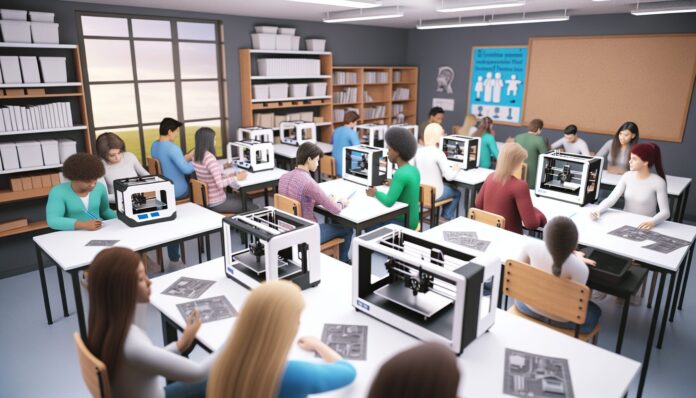3D printing is no longer confined to industrial prototyping or hobbyist projects—it’s now a powerful educational tool shaping the next generation of innovators. Around the world, students are using additive manufacturing to solve real-world problems, from medical devices to sustainable solutions, proving that the classroom can be a launchpad for global impact.
3D Printing in Education: A Catalyst for Innovation
Educational institutions are increasingly integrating 3D printing into their STEM curricula, empowering students to turn ideas into tangible prototypes. This hands-on approach not only enhances learning but also fosters creativity, problem-solving, and collaboration. From elementary schools to universities, students are using 3D printers to design assistive devices, environmental tools, and even architectural models.
One standout example is the 2024 Make:able Challenge, a global competition that invites students to design and 3D print assistive technology for people with disabilities. This year’s entries included a wide range of innovative solutions, such as custom prosthetics, adaptive utensils, and mobility aids—all designed by students under the age of 18. The challenge, organized by PrintLab and Autodesk, not only promotes technical skills but also empathy and social responsibility.
Global Impact Through Student-Led 3D Printing Projects
Students from over 30 countries participated in the Make:able Challenge, showcasing how 3D printing can transcend borders and bring diverse perspectives to problem-solving. For instance, a team from India developed a low-cost, 3D-printed Braille learning device, while students in the UK created a modular grip aid for individuals with limited hand mobility. These projects demonstrate how young minds are using technology to address local and global challenges.
In the United States, a high school team designed a 3D-printed exoskeleton glove to assist individuals with muscular dystrophy. The glove, made from flexible filament and powered by simple mechanical components, was praised for its affordability and ease of use. Meanwhile, a group in Kenya developed a water filtration system using 3D-printed components, aiming to improve access to clean water in rural communities.
How 3D Printing Enhances STEM Learning
3D printing offers a unique blend of engineering, design, and digital fabrication, making it an ideal tool for STEM education. Students learn to use CAD software, understand material properties, and iterate designs based on real-world feedback. This iterative process mirrors professional engineering workflows, giving students a head start in technical careers.
Moreover, 3D printing encourages interdisciplinary learning. For example, a project to design a prosthetic hand might involve biology (understanding anatomy), physics (mechanical movement), and computer science (designing in CAD). This holistic approach prepares students for the complexities of modern innovation.
Looking Ahead: The Future of 3D Printing in Classrooms
As 3D printing technology becomes more accessible and affordable, its role in education is set to expand. Initiatives like the Make:able Challenge are just the beginning. Schools are now exploring how to integrate 3D printing into broader curricula, including art, history, and environmental science. For instance, students might recreate historical artifacts or design sustainable packaging solutions.
Industry partnerships are also playing a key role. Companies like Ultimaker, Prusa, and MakerBot are offering educational bundles and training resources to help teachers bring 3D printing into the classroom. These collaborations ensure that students not only learn how to use the technology but also understand its real-world applications.
Ultimately, 3D printing is more than just a tool—it’s a gateway to innovation, empathy, and global citizenship. As students continue to tackle meaningful challenges through design and fabrication, they’re proving that the future of technology is in good hands.
Source: 3D Printing Industry

